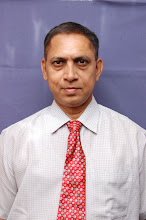Indelible footprints of India
everywhere.
The western world had a misconception
about India and Indian lifestyle 60 years ago. Foreigners imagined India to be
a land of Snakes and Snake charmers living in tree houses. When I heard about
this, I had a hearty laugh. To me India was a spiritual country with rich
cultural heritage and sound value system. I would spend hours arguing over the
spread of Indian culture across the globe. I would talk about the sages and Rishis of our historical past who left no
stones unturned to disseminate the Indian Philosophy and Culture across the
Globe.
As I grew up, I
realized with wonderment how Indian way of life was influencing the world.
India is a colourful and vibrant country with magnetic charm and pulsating with
life. With such irresistible qualities, it is no wonder that Indian way of life
has diffused into the world and created a stir in its own way.
In this complex
world of stress and strife, Indians offered a panacea to the world by way of
Yoga and Meditation. Many centers offering Yoga classes as stress busters can
be seen in every nook and corner of the world. Even Pilates (a physical fitness
system) is based on Aerobics and yoga postures of Surya Namaskaras. Ayurveda an intrinsic part of Indian medicine
is very popular among the westerners. Ayurvedic massages and Spa are much sought
after medicinal therapies. Indian Ayurveda, a holistic approach to health that
fuses the forces of mind, body, senses and spirit has kindled the curiosity of
the westerners. Companies like L’Oreal have evinced interest in India Ayurveda
skin care products and companies like Estee Lauder have created their own
Ayurvedic spa treatments.
My trip to the
United States was an eye-opener in one way. I realized how far Indians had
stretched themselves to popularize Indian cuisine even in remote areas. You
could find restaurants under the name of Taj in many remote places serving
north Indian cuisine. These restaurants attracted a fair number of foreigners. Indian
cuisine is now one of the most popular cuisines across the globe and is enjoyed
by the general population in North America, Europe, Australia and parts of
Africa.
Indian spices,
so integral to Indian cuisine, are an all time favorite of the food lovers
across the world. The subtle flavour of these spices enhances the quality and
appeal of vegetarian food attracting the discerning gourmand. Chicken Tikka is
an all time favorite of the people around the globe. The Indian Jhal Moori
(masala puffed rice) is an all time favorite of Queen Elizabeth of England.
I cannot fail to
mention the various dance forms of India that have captivated the western
audience. Barathanatyam and Kathak have never failed to enthrall western senses.
The most powerful Indian cultural export has long been its film industry,
nicknamed Bollywood, which is generally believed to produce the largest number
of feature films in the world. Sometimes dubbed in local languages, these
films, filled with colorful costumes, dances, music, and love stories are
watched in Kuwait, Nigeria, Russia, Scandinavia, the Caribbean and even Fiji.
Bollywood has globalised Indian dances and exposed it to the western world. I
was totally surprised and thrilled to watch foreigners dance energetically to
Bollywood numbers in the popular American TV show, “So you think you can
dance”. The energetic Bhangra a north Indian dance form has been incorporated
in Gyms and has become popular in the West.
How can I miss
mentioning about our very own Henna tattoos which has now become commonplace in
households around the world.
There are many
other aspects of Indian culture that have spread on a global scale. From
curries to computer programs, self-realization to the arts, and well beyond, we
are seeing its influence. The popular Indian art of using henna to create
beautiful body designs and patterns only temporarily affects the surface of the
skin. The influence of India leaves a permanent — and positive —impact on the
world.
Isn’t it proof
enough that Indians mark their presence everywhere?
S.SEKAR
Email: sekrajc@yahoo.com
Chennai
